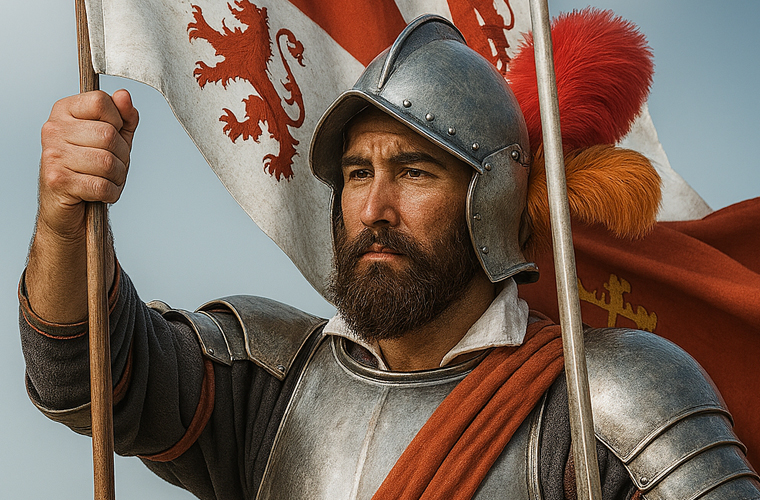Vasco Núñez de Balboa was born around 1475 in Jerez de los Caballeros, a town in the Extremadura region of Spain. Raised in a modestly noble family, Balboa grew up during an era of exploration fueled by Spain’s ambition to expand its influence. His early years were shaped by the tales of Christopher Columbus and the promise of wealth in the New World. Seeking adventure and fortune, Balboa sailed to the Americas in 1500 as part of an expedition led by Rodrigo de Bastidas, marking the beginning of his journey as an explorer.
Adventures in the New World
Balboa’s early ventures in the Americas were marked by struggles. After settling in Hispaniola, he attempted to establish himself as a planter but fell into debt. To escape creditors, he stowed away on a ship bound for the mainland in 1510, joining an expedition to the Isthmus of Panama. There, his leadership and charisma shone through. He took command of the struggling settlement of Santa María la Antigua del Darién, the first stable European settlement on the American mainland, and quickly gained the loyalty of the colonists.
Balboa’s ambition drove him to explore the uncharted territories of Panama. He forged alliances with local indigenous tribes, sometimes through diplomacy and other times through force, to secure resources and information. His interactions with native peoples were complex, blending cooperation with the brutal tactics typical of Spanish conquistadors. These efforts laid the groundwork for his most famous achievement.
Discovery of the Pacific Ocean
In 1513, Balboa led an expedition across the treacherous jungles and mountains of Panama, driven by indigenous accounts of a vast sea to the south. On September 25, 1513, after a grueling journey, Balboa reached a peak and became the first European to gaze upon the eastern shores of the Pacific Ocean, which he named the “South Sea.” He claimed the ocean and all its lands for the Spanish crown, a pivotal moment in European exploration that expanded Spain’s colonial ambitions. This discovery was monumental, as it revealed a new ocean and opened the possibility of further exploration and trade routes. Balboa’s achievement solidified his reputation, but it also attracted envy and political rivals within the Spanish colonial hierarchy.
Downfall and Legacy
Balboa’s success was short-lived. His rival, Pedro Arias Dávila (Pedrarias), arrived in Panama as the new governor in 1514. Tensions between the two men grew, fueled by Pedrarias’ jealousy and Balboa’s independent streak. Despite Balboa’s continued efforts to explore and govern effectively, he was accused of treason by Pedrarias. In 1519, Balboa was arrested, tried on dubious charges, and executed in the town square of Acla.
Vasco Núñez de Balboa’s legacy endures as a key figure in the Age of Exploration. His discovery of the Pacific Ocean paved the way for later explorers like Ferdinand Magellan, who would further map the globe. Balboa’s story is one of ambition, courage, and tragedy—a reflection of the complex and often ruthless nature of European conquest in the Americas. His name lives on in places like Panama’s Balboa Peninsula and the Panamanian currency, the balboa, a testament to his enduring impact.

